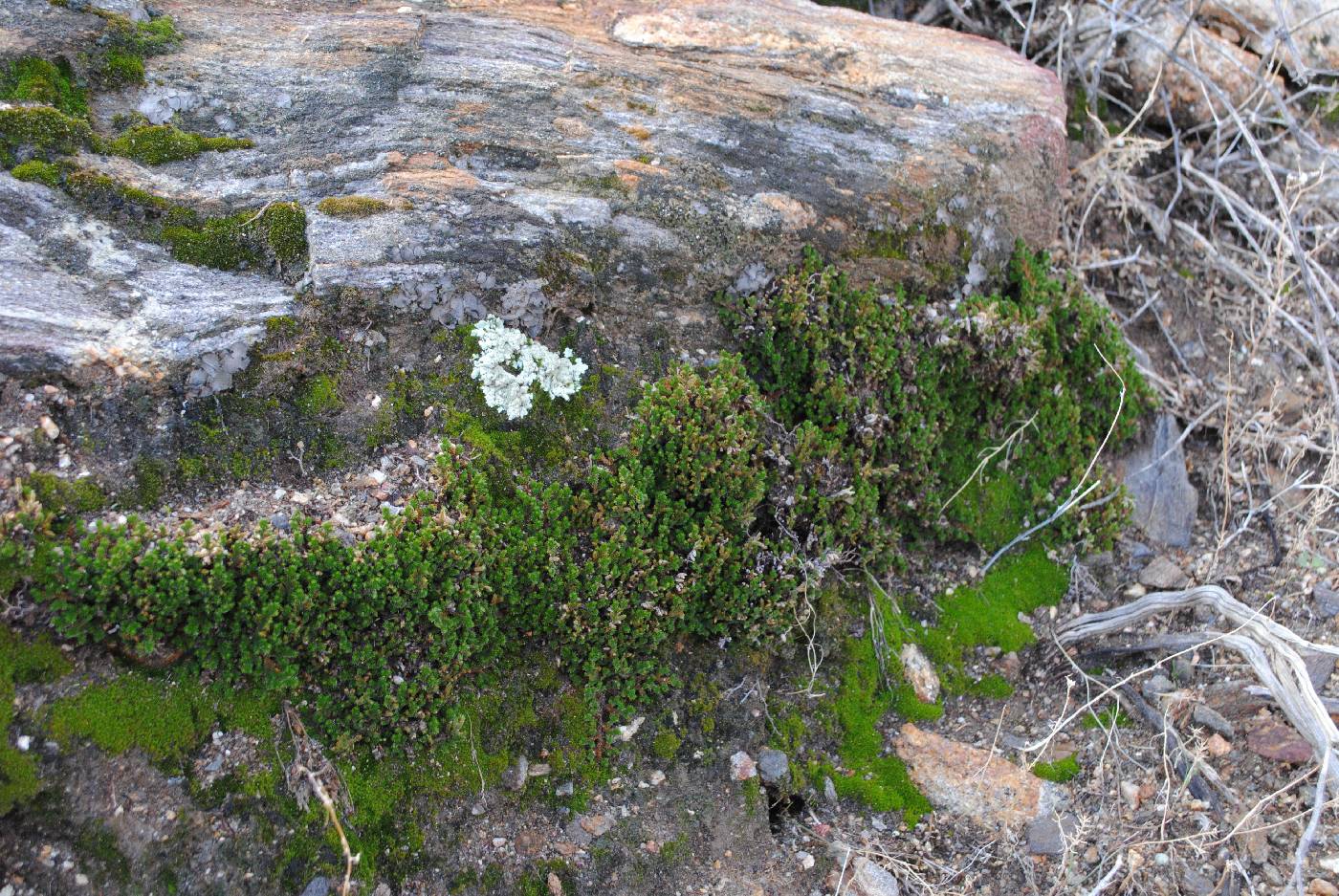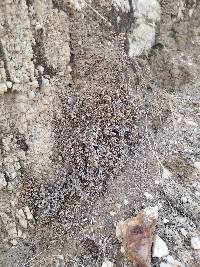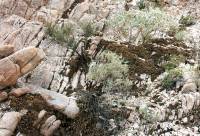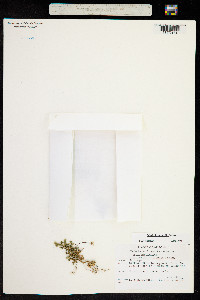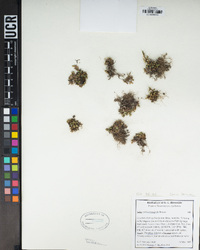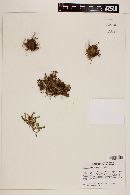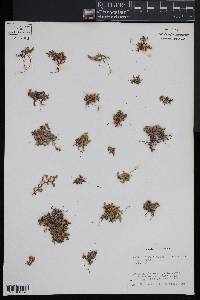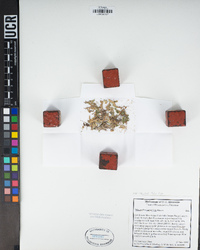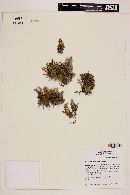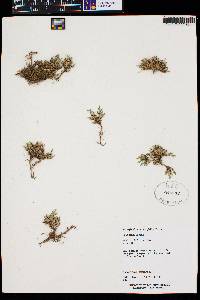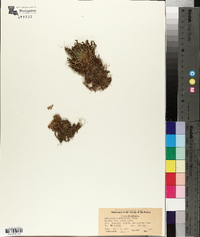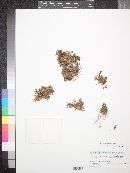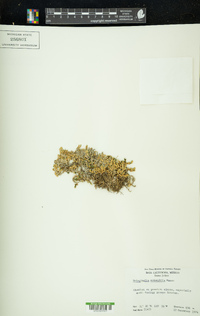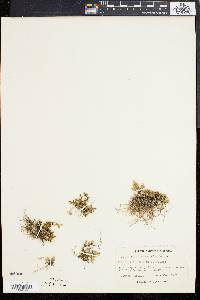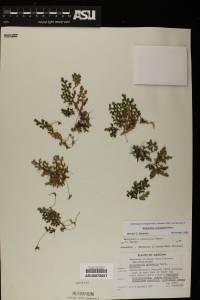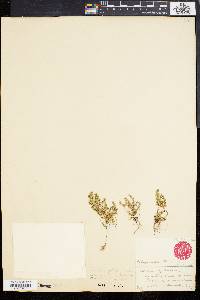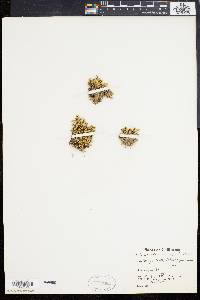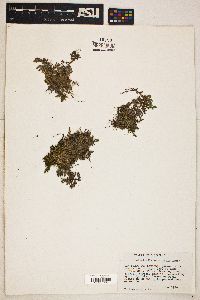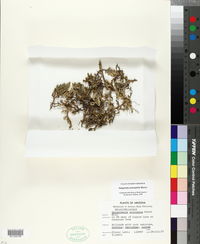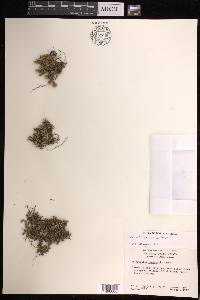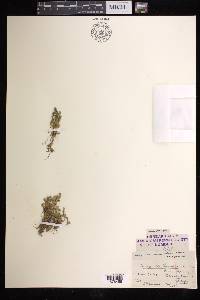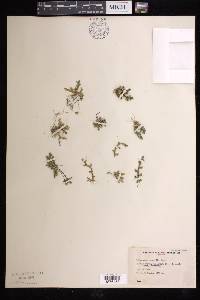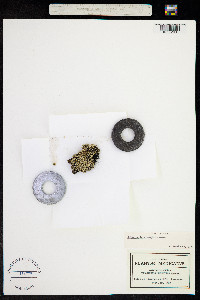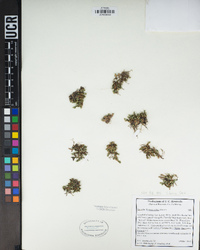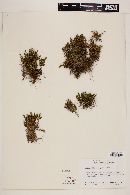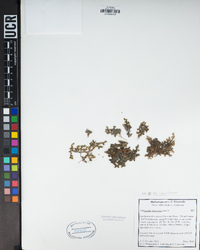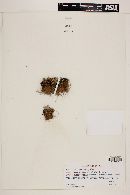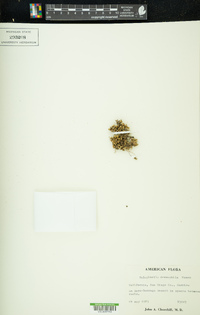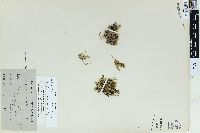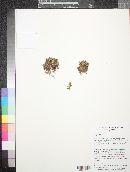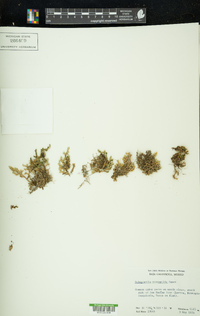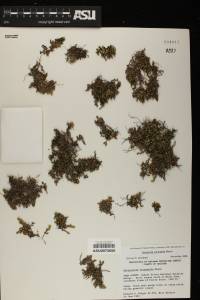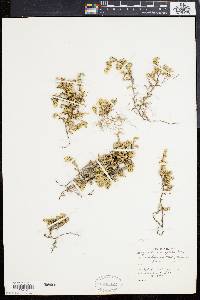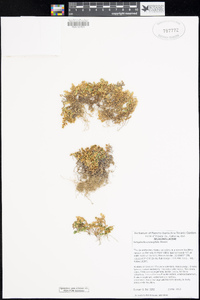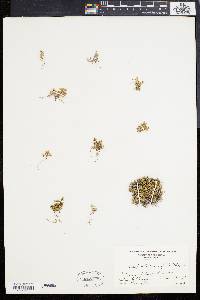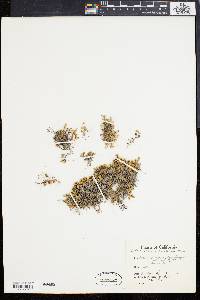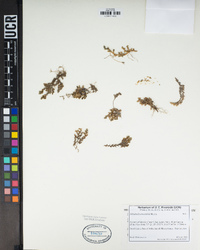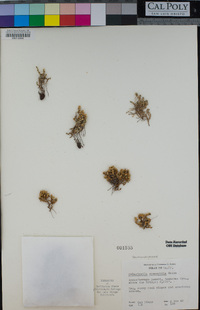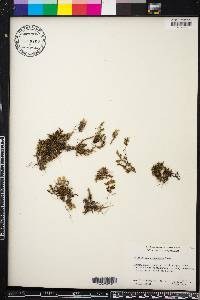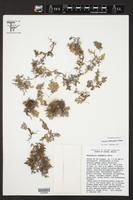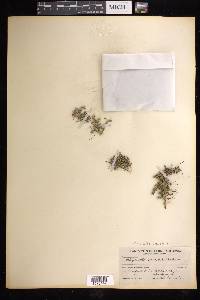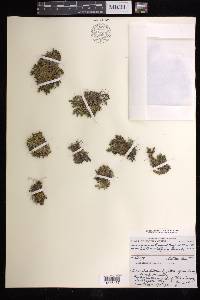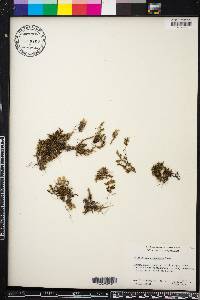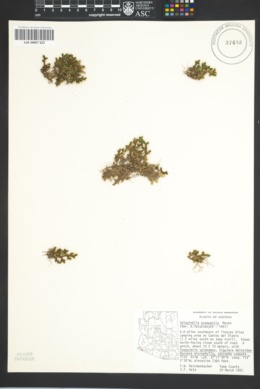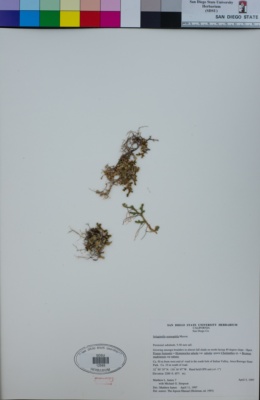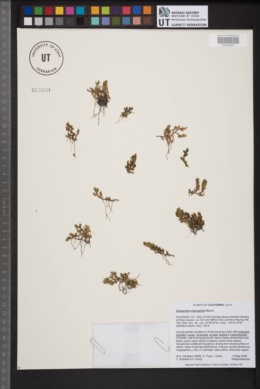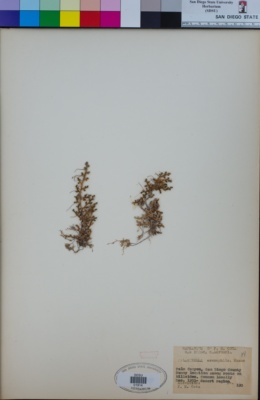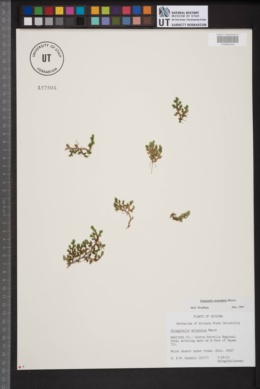Selaginella eremophila
|
|
|
|
Family: Selaginellaceae
Desert Spike-Moss, more...desert spikemoss
|
Plants on rock or terrestrial, forming dense mats. Stems not readily fragmenting, prostrate, upperside and underside structurally different, irregularly forked; branches determinate, tips upturned. Rhizophores borne on upperside of stems, throughout stem length, 0.2 mm diam. Leaves conspicuously dimorphic, in 8 ranks, tightly appressed, ascending, green; abaxial ridges present; apex with deciduous, twisted, transparent bristle ± 0.3 mm, becoming acute to slightly mucronate in oldest branches. Underside leaves lanceolate to lanceolate-elliptic (on central ranks) or falcate (on marginal ranks), 2--2.7 X 0.5--0.7 mm; base decurrent, glabrous; margins ciliate, cilia transparent to opaque, spreading, 0.04--0.1 mm. Upperside leaves lanceolate, 1.3--1.4 X 0.3--0.4 mm; base abruptly adnate, pubescent, hairs often running along groove; margins ciliate, cilia transparent to opaque, spreading, ca. 0.1 mm. Strobili solitary, 3--8 mm; sporophylls ovate-deltate, abaxial ridges not prominent, base glabrous, margins ciliate, apex acute to mucronate. Rocky and sandy slopes, in open rock or crevices or in soil; 130--1000 m; Ariz., Calif.; Mexico in Baja California. Selaginella eremophila is most closely related to the Mexican S . parishii L. Underwood and S . landii Greenman & Pfeiffer. In S . eremophila and the following two species, S . arizonica and S . peruviana , the leaves are arranged in 8 conspicuous ranks: 3 underside (2 marginal, 1 central), 2 lateral, and 3 upperside (2 marginal, 1 central).
STEMS: monomorphic, not readily fragmenting when dry, the branch tips appearing curled when dry, prostrate, usually forming small loose low mats. RHIZOPHORES: produced throughout. LEAVES: relatively strongly dimorphic, the tip sharply pointed (Fig. 3), with a delicate contorted white seta 0.3-0.4 mm long(this often breaking off with age), the margins ciliate; adaxial stem leaves 1.3-1.5 mm long, lanceolate, green to yellowish green when hydrated, the base abruptly adnate (differing in color from the stem); abaxial stem leaves 2.0-2.7 mm long, lanceolate to elliptic-lanceolate, persistently gray to brown, the base decurrent (similar in color to the stem). STROBILI: 3-8 mm long, the sporophylls ovatedeltate, narrowed to an acute tip lacking a seta, the margins short-ciliate. MEGASPORES: with the surface, finely rugose-reticulate, light yellow. NOTES: Rock ledges, cliffs, and open gravelly to rocky areas, usually on igneous or volcanic substrates: Maricopa, Pima, Yuma cos. (Fig. 1C); 150-800 m (500-2600 ft); endemic to the Sonoran Desert region of s CA, s AZ, nw Mex. The distribution of S. eremophila in Arizona is somewhat broader than was known to Tryon (1955) and Morton (1960), who knew the species in the state only from Yuma County. The easily abscised setae make some specimens difficult to distinguish from the closely related S. arizonica. See the treatment of that species for a discussion of possible hybridization between it and S. eremophila. REFERENCES: Yatskievych, G. and M. D. Windham. 2009. Vascular Plants of Arizona: Selaginellaceae. CANOTIA 5 (1): 39-48. General: Dense mat forming plant, on rock or soil, not readily fragmenting, prostrate, with upper and undersides structurally different; irregularly forked, but branches determinate with upturned tips; rhizophores borne on upperside of stems, throughout stem lengt Leaves: Conspicuously dimorphic, in 8 ranks, tightly appressed, ascending, green; with ridges below, the apex with a deciduous, twisted and transparent bristle about 0.3 mm long, to slightly mucronate on older branches; underside leaves lanceolate to lanceolate-elliptic 2-2.7 mm by 0.5-0.7 mm; decurrent base, glabrous, ciliate margins, cilia transparent to opaque, spreading, 0.04-0.1 mm; upperside leaves lanceolate, 1.3-1.4 mm by 0.3-0.4 mm; base abruptly adnate, pubescent, hairs often running along groove, margins ciliate, about 0.1 mm. Sporangia: Strobili solitary, 3-8 mm, with ovate-deltate sporophylls, ridges below not prominent, glabrous base, ciliate margins, apex acute to mucronate. Ecology: Found on rocky and sandy slopes, often in rock crevices or in soil from 500-3,500 ft (152-1067 m). Notes: Distinguished from S. arizonica by the long slender terminal bristles that are deciduous, where in S. arizonica and S. densa the bristle is persistent. Etymology: Selaginella is a diminutive of Selago, the name of another similar plant, while eremophila means desert loving. Sources: FNA 1993, Kearney and Peebles 1969 FNA 1993, Kearney and Peebles 1969 Common Name: desert spikemoss Rarity: None General: Dense mat forming plant, on rock or soil, not readily fragmenting, prostrate, with upper and undersides structurally different; irregularly forked, but branches determinate with upturned tips; rhizophores borne on upperside of stems, throughout stem length, 0.2 mm in diameter. Leaves: Conspicuously dimorphic, in 8 ranks, tightly appressed, ascending, green; with ridges below, the apex with a deciduous, twisted and transparent bristle about 0.3 mm long, to slightly mucronate on older branches; underside leaves lanceolate to lanceolate-elliptic 2-2.7 mm by 0.5-0.7 mm; decurrent base, glabrous, ciliate margins, cilia transparent to opaque, spreading, 0.04-0.1 mm; upperside leaves lanceolate, 1.3-1.4 mm by 0.3-0.4 mm; base abruptly adnate, pubescent, hairs often running along groove, margins ciliate, about 0.1 mm. Sporangia: Strobili solitary, 3-8 mm, with ovate-deltate sporophylls, ridges below not prominent, glabrous base, ciliate margins, apex acute to mucronate. Ecology: Found on rocky and sandy slopes, often in rock crevices or in soil from 500-3,500 ft (152-1067 m). Notes: Distinguished from S. arizonica by the long slender terminal bristles that are deciduous, where in S. arizonica and S. densa the bristle is persistent. Ethnobotany: Unknown Etymology: Selaginella is a diminutive of Selago, the name of another similar plant, while eremophila means desert loving. Synonyms: None Editor: SBuckley, 2010 |
|
|
|

